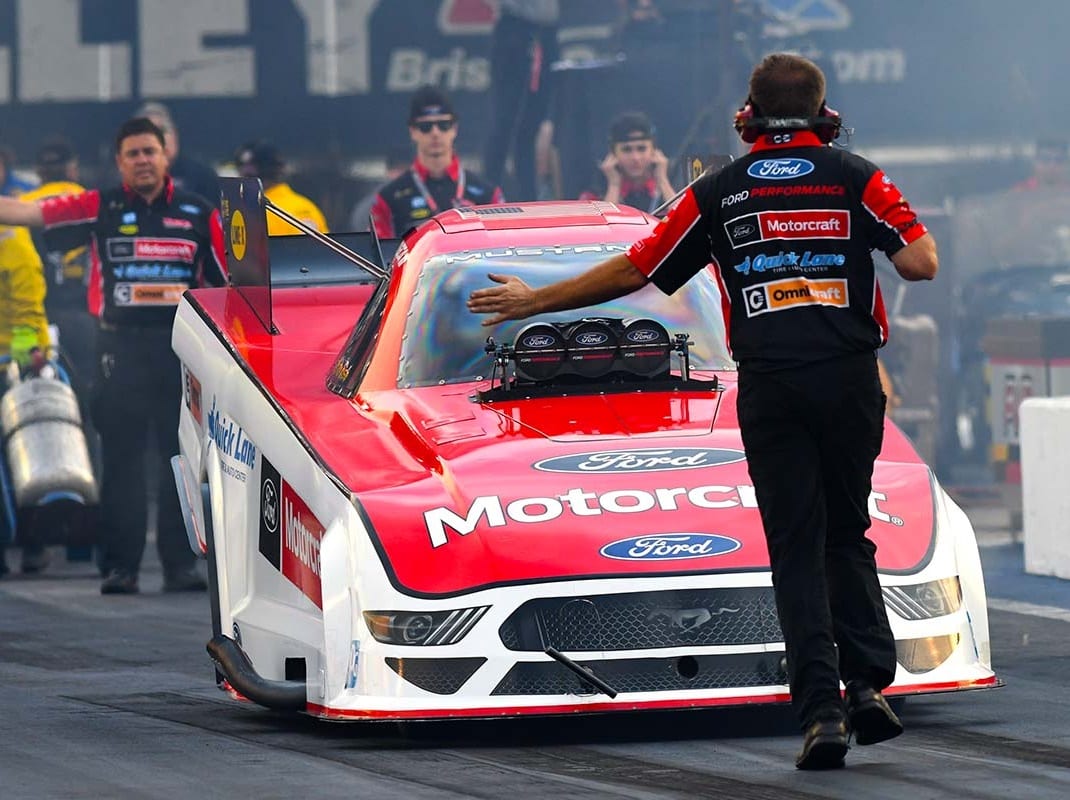Johnson then details the process he goes through on the starting line before a run.
“I look at the Christmas tree a few times, and I might look at the groove, just to make sure I know where I need to be,” he noted. “I’m big on knowing where I need to be ahead of time. I do a lot of visualization before we start the car, so I can feel like I’ve already made the run before I make it. When I get to a certain point on the track I feel like I’ve already been there. I have a game plan in my mind.
“It’s a little easier in a Top Fuel car,” Johnson added, “because a driver’s vision is so much better. I never had anybody line me up in a dragster. I lined myself up. In a Funny Car, you might think you’re straight when you’re not. Dragsters are a little bit easier because you don’t have the body or windshield.
“(When lining up) the dragster, it’s like sitting on the front bumper of the Funny Car. You can see everything. In the Funny Car, you can’t see anything.”
For Arana and his fellow bikers, “It’s different than a car because we’re sitting on top of the vehicle. When we leave the starting line, it’s pulling three Gs. It pulls up the front wheel and we carry it to about the 330-foot mark,” Arana noted. “So we really have to make sure the bike is straight. We pick the spot on the track where we’re going to take off from. Then you do your burnout in third gear. Now I’m looking at where I’m going to line up.
“I look at my target up ahead at the end of the track to align myself.”

During qualifying, bikes run first, but on race day they follow the Top Fuel, Funny Car and Pro Stock classes.
“When we go behind the cars, the groove is a little bit more defined. We’ll run right in their tire groove. They have pretty wide tires,” he noted. “We have two to three feet of good rubber to pick from. (Between those tire grooves) is where all the clutch dust and oil are. It’s greasier and the track is slimy. So the track surface isn’t as good.
“After the burnout, we have to swap hands. I’ve got to hold the clutch with my (opposite-side) lever. I put the bike in first gear. So when we’re rolling in, we roll in with our feet, hands on the clutch,” Arana said. “I stage in the beams with my feet, where a car will have to let out the clutch (because they have the trans brake on) and drive the car in. We push the bike in with our feet. Our clutch is all the way in. We’re wide open.
“We’re on our two-step switch, and we pop the clutch. We totally have to release our hand from the handlebars for the takeoff and grab the handlebars again. That’s the most nerve-wracking. That’s the jumping-out-of-the-plane part of the run. That’s where you’ve got to commit. There is no ‘I’m going to let it halfway out’ or ‘I’m going to ease it out.’
“That is the hardest part of the run.”
